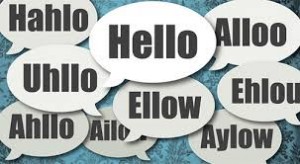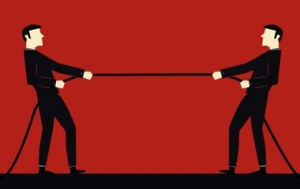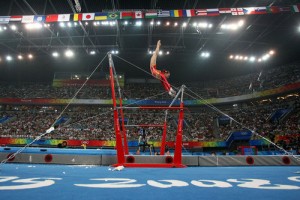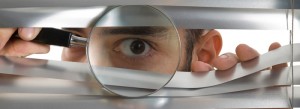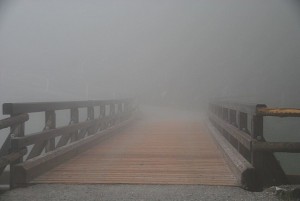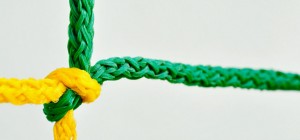Image: The graphic novel provides us with conflicting voices; we can’t simply focus on the words anymore. Our pattern of reading is disrupted, and we have to discern between voices on the page. We can’t just look at these pictures, because they are literally worth words.
Image: I see this photo as two things: first, I see it illustrate the metaphorical tug-of-war between the linguistic and the visual/spatial. There is a power struggle going on, but some audiences fail to realize that the modes cannot be separated. What if this power struggle was forgotten? If we learn to embrace the modes as a system and not as separate parts, we can begin to incorporate all modes into critical thinking.
Image: When I read this, I immediately thought of a gymnast on uneven bars. The bars run parallel, but the gymnast has to flip between the two. The gymnast obviously needs both bars; without both of them, the routine would not be near as beautiful or impressive. I think this speaks to the hesitance to compose with pictures and words… Pictures are difficult, if not more difficult than writing alone. The uneven bars are arguably more difficult than a routine on one bar, considering the athlete doesn’t have to switch between two bars that are feet apart. The same can be said for writing with words and pictures.
Image: This picture makes me think of the “omnipresent gaze” and how this gaze influences the way we write. A doctorate student in the Rhet/Comp concentration once told me that we have almost “fetishized” the written word and linguistic component of writing, and this comic made me think of how there is possibly a gaze from the academic or older world… Perhaps there is a gaze that forces us to favor the written word. A good chunk of academic writing is written and refuses to employ drawings and other visual aspects.
Image: Why do the blending and bleeding of voices and agency make us uncomfortable? Because it sends us into the unknown. In “Introducing Derrida,” we see the roles of writer, designer, and illustrator blend together. This made me think of driving or walking into fog, and how it forces us to focus so much harder on what is directly in front of us. It makes us hyperaware.
Image: How does multimodality complicate composing? Complicate has a negative connotation, but the word works here. Multimodality, as seen with comics and graphic novels, disrupt our typical way of reading. It makes us interact with the text, and it ties different meanings into one page or piece. This comic made me think of braided cords; Humphrey says that “Meaning is braided throughout the network of a comic.” This braided meaning is present not just in comics, but in all multimodal texts.
